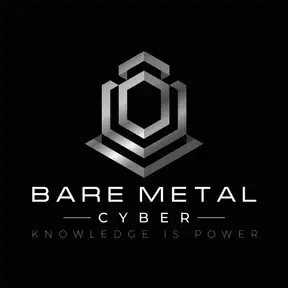Uncovering Digital Clues: An Introduction to Digital Forensics
Welcome to Dot One, where we break down the key concepts of cybersecurity, making complex topics accessible and actionable. Whether you're an industry professional, a student, or just someone curious about digital security, this podcast delivers insights that help you stay informed and ahead of emerging threats. Each episode explores critical cybersecurity challenges, best practices, and the technologies shaping the digital landscape.
Be sure to check out my author profile at cyber author dot me, where you’ll find books covering cyber careers, governance, risk management, and even cybersecurity in pop culture. But for now, let’s dive in!
And today’s episode/topic is:
Uncovering Digital Clues: An Introduction to Digital Forensics
Digital forensics plays a vital role in the investigation of cyber incidents by uncovering and analyzing evidence stored on electronic devices, making it an essential discipline in today’s technology driven world. This field enables professionals to reconstruct events, identify perpetrators, and preserve data for use in legal proceedings, corporate audits, or security responses. Its significance spans criminal justice, where it helps solve cases like fraud or hacking, to corporate environments, where it addresses internal breaches or policy violations. As digital systems become increasingly integral to daily life, understanding the basics of digital forensics equips organizations and individuals to combat cyber threats effectively while ensuring evidence remains credible and admissible.
Understanding Digital Forensics
Digital forensics is the practice of recovering, preserving, and analyzing electronic evidence to investigate incidents involving computers, networks, or digital devices, with the purpose of providing factual insights that support decision making in justice, compliance, or organizational improvement. Investigators focus on uncovering facts tied to cybercrimes or incidents, such as hacking or data theft, by piecing together digital clues to answer critical questions about who was involved, when it happened, and what the impact was, especially in situations where traditional evidence is absent. This discipline applies broadly across criminal cases, like tracking perpetrators of identity theft, civil litigation, such as disputes over intellectual property, and internal organizational investigations into employee misconduct or data leaks, showcasing its versatility. A key emphasis lies in maintaining evidence integrity for legal admissibility, requiring strict protocols to ensure data remains unaltered and credible under courtroom scrutiny, distinguishing digital forensics from casual data recovery efforts.
The key objectives of digital forensics ensure investigations are purposeful and yield actionable results tailored to the needs of stakeholders like law enforcement, businesses, or legal teams. One objective is to identify the source and nature of a digital incident, such as tracing a malware attack’s origin or determining if a breach was intentional, to inform prevention strategies. Another goal is to preserve evidence in a forensically sound manner, using tools like write blockers to secure devices or data without modification, ensuring its reliability in court. Additionally, it aims to reconstruct events to establish a timeline of actions, providing a clear sequence of what occurred, while also supporting legal proceedings with factual findings that can withstand judicial review.
Digital evidence comes in various forms, each offering unique insights into an investigation. Data from computers, such as system logs or files, provides a wealth of information about user activities or system states. Mobile device records, including text messages or call logs, offer personal communication details critical to many cases. Network traffic, like captured packets or connection logs, reveals interactions between systems that might indicate unauthorized access. Cloud based artifacts, such as emails or stored documents, extend the scope to remote data, reflecting the modern shift to online storage.
The scope of digital forensics investigations varies widely depending on the context and goals. Cybercrime cases, such as hacking or online fraud, rely on forensics to identify perpetrators and gather prosecutable evidence. Corporate incidents, like internal data leaks or policy violations, use it to enforce accountability and protect assets. Intellectual property theft investigations leverage digital forensics to trace stolen designs or documents back to their source. Personal disputes, such as cases of online harassment, depend on it to provide digital proof of interactions or intent.
Core Principles and Processes
A fundamental principle in digital forensics is maintaining a chain of custody, which involves documenting evidence handling from collection to presentation to ensure its integrity throughout the investigation. This process requires detailed logs to track every transfer of custody, such as from an investigator to a lab technician, to establish accountability. Ensuring no tampering occurs during handling is critical, as even minor alterations could discredit findings in court. Verification of this chain is essential for courtroom acceptance, providing assurance that evidence reflects the original state.
Forensic soundness is another core principle, focusing on preserving original data without alteration to maintain its evidentiary value. Investigators use write blockers to prevent changes when accessing storage devices, ensuring the source remains intact. They create exact duplicates, known as forensic images, for examination, allowing analysis without risking the original. Adherence to standardized forensic protocols, recognized across the industry, underpins this process, ensuring consistency and reliability.
The investigation process follows distinct phases to systematically handle digital evidence. Identification involves locating potential evidence sources, such as laptops or servers, relevant to the case. Collection requires securing devices and data safely, often under controlled conditions to avoid contamination. Analysis entails examining the data for relevant findings, using tools to uncover hidden or deleted information. Reporting concludes the process by documenting results in a clear, concise manner for stakeholders like attorneys or executives.
Digital forensics operates within strict legal and ethical standards to ensure investigations remain lawful and responsible. Compliance with laws like the Electronic Communications Privacy Act governs how evidence is accessed, protecting against unauthorized intrusion. Respecting privacy rights during evidence collection balances investigative needs with individual protections. Ethical handling of sensitive or personal information prevents misuse, while alignment with professional codes, such as those from the International Society of Forensic Computer Examiners, reinforces credibility.
Tools and Techniques
Digital forensic investigators rely on a variety of specialized tools to efficiently process evidence. EnCase is widely used for comprehensive disk analysis, allowing detailed examination of storage media. The Forensic Toolkit excels in file and data recovery, retrieving lost or deleted content critical to investigations. Cellebrite specializes in mobile device extraction, pulling data like contacts or messages from smartphones. Wireshark aids in network traffic inspection, capturing packets to reveal communication patterns or anomalies.
Data acquisition methods vary depending on the device and investigation needs. Live acquisition captures data from running systems, useful for volatile information like active memory. Dead acquisition involves collecting data from powered off devices, ensuring a stable snapshot of storage. Logical extraction targets specific data sets, such as emails or documents, without imaging entire drives. Physical imaging creates a bit by bit copy of entire storage devices, preserving all content for in depth analysis.
Analysis techniques enable investigators to extract meaningful insights from acquired data. Keyword searching identifies relevant evidence by scanning for specific terms or phrases tied to the case. Timeline reconstruction uses metadata, like timestamps, to establish a chronological sequence of events. Recovery of deleted files or partitions uncovers information users attempted to erase, often pivotal to findings. Decryption of protected data, when legally authorized, provides access to otherwise inaccessible evidence.
Emerging technologies are expanding the capabilities of digital forensics to address modern challenges. Cloud forensics focuses on analyzing remote data stored on platforms like Google Drive, requiring new approaches to access. Artificial intelligence enhances pattern detection, automating the identification of anomalies in large datasets. Internet of Things device examination tackles the growing prevalence of smart devices, such as thermostats, with unique data types. Blockchain analysis traces transactions on decentralized ledgers, relevant to financial crime investigations.
Applications and Challenges
Digital forensics has diverse real world applications across multiple domains. In criminal investigations, it identifies perpetrators by linking digital evidence, like login records, to individuals involved in offenses such as fraud. Corporate audits use it to investigate employee misconduct, such as unauthorized data sharing, ensuring internal compliance. Incident response relies on forensics to analyze breaches, determining how attackers gained access and what was compromised. Litigation support leverages it for electronic discovery processes, supplying digital proof in civil disputes.
Investigators face several common challenges that complicate digital forensic work. The sheer volume of data in modern systems requires efficient processing to avoid overwhelming resources or delaying findings. Encryption obstructs access to evidence, as locked files or devices resist analysis without keys or legal authority. Anti forensic techniques, like data wiping, hide activities, forcing experts to develop countermeasures. Rapidly evolving technology outpaces tools, demanding constant updates to stay effective.
Cross disciplinary collaboration enhances the success of digital forensic investigations. Coordination with law enforcement ensures legal cases align with prosecutorial needs, such as admissible evidence formats. Partnership with information technology teams provides technical insight into systems under review, aiding accurate analysis. Consultation with legal experts ensures compliance with regulations, avoiding procedural errors. Engagement with management secures resource allocation, supporting thorough and timely investigations.
The field of digital forensics is poised for evolution with notable future trends. Increased focus on cloud based evidence reflects the shift to remote storage, necessitating specialized retrieval methods. Integration of machine learning for automation speeds up data processing, improving efficiency in large cases. Growth in mobile and Internet of Things forensics addresses the proliferation of personal devices, expanding evidence sources. Standardization of global forensic practices aims to unify methodologies, enhancing cross border cooperation.
Conclusion
Digital forensics stands as a cornerstone of modern investigative practice, offering the tools and techniques to uncover truth in an increasingly digital world, from solving crimes to resolving corporate disputes. Its ability to adapt to emerging technologies, like cloud systems or smart devices, ensures its relevance amid evolving cyber challenges. By maintaining rigorous standards of evidence preservation and analysis, it upholds justice and organizational integrity in the face of sophisticated threats. As reliance on digital systems grows, the continued development and application of digital forensics remain essential to safeguarding society and ensuring accountability.
Thank you for joining us on this episode of Bare Metal Cyber! If you liked what you heard, please hit that subscribe button and share it with others.
Head over to bare metal cyber dot com for more cybersecurity insights, and join the tens of thousands already subscribed to my newsletters for exclusive tips on cybersecurity, leadership, and education.
Want to be a guest on a future episode? Visit bare metal cyber dot com and fill out the form at the bottom of the page—I’d love to hear from you!
Lastly, as the author of several books and audiobooks on cyber topics, I’d be grateful for your reviews. Your support helps this community thrive.
Stay safe, stay sharp, and never forget: knowledge is power!

